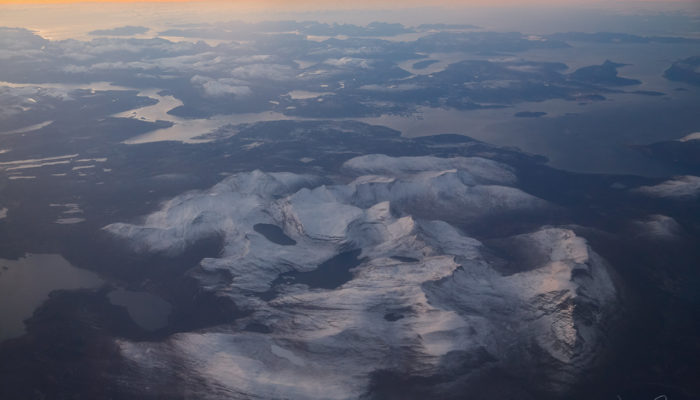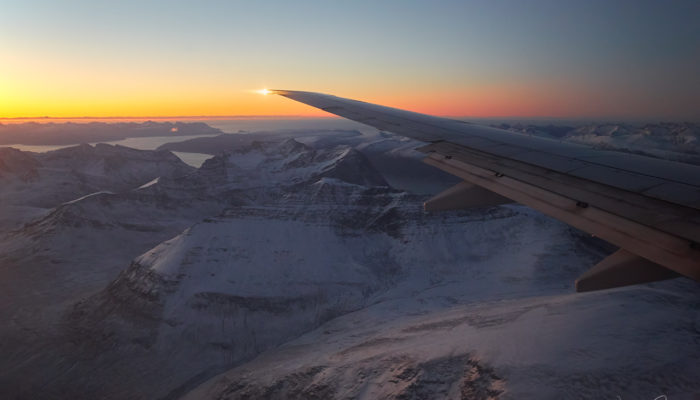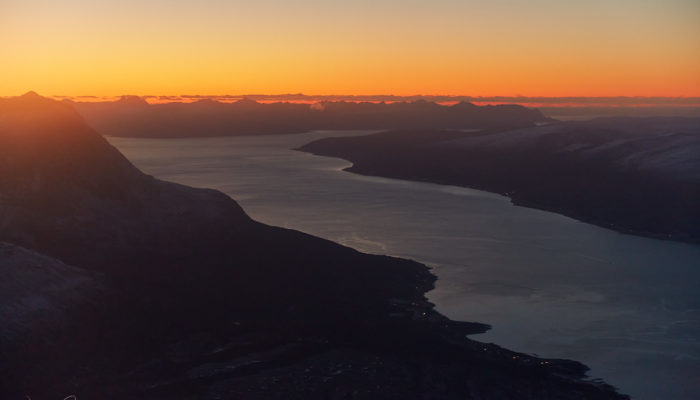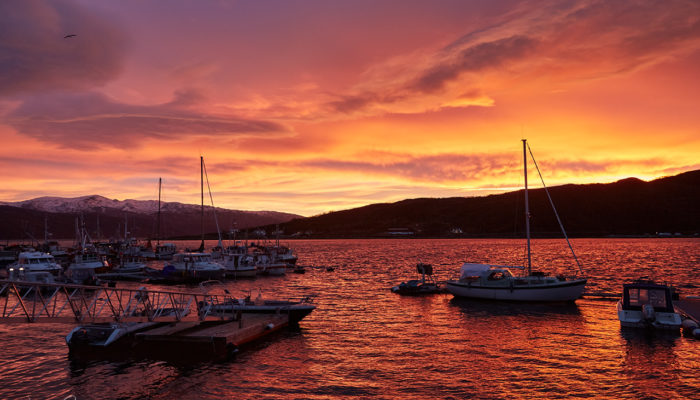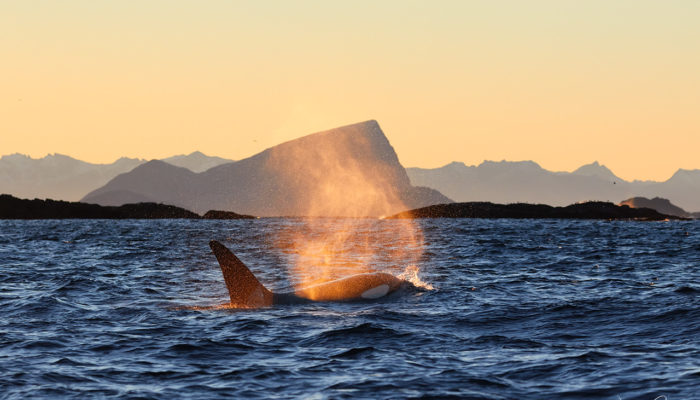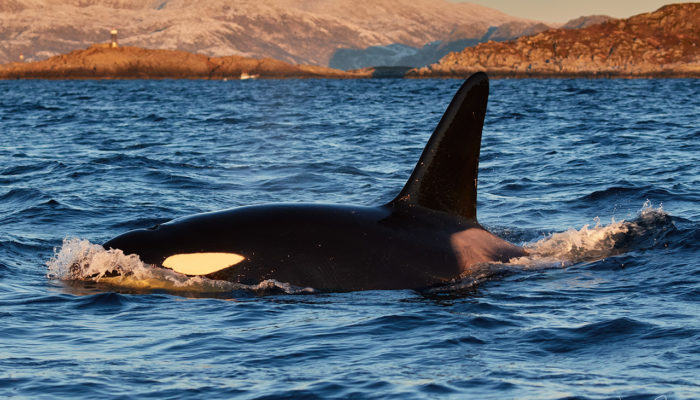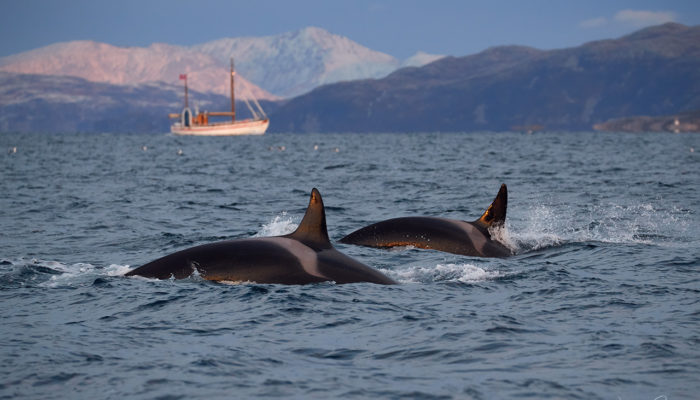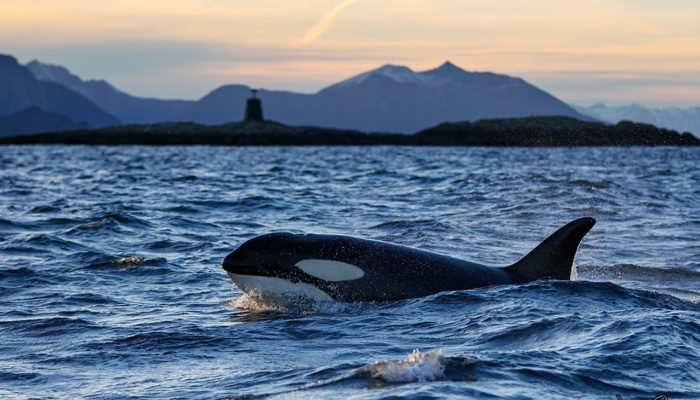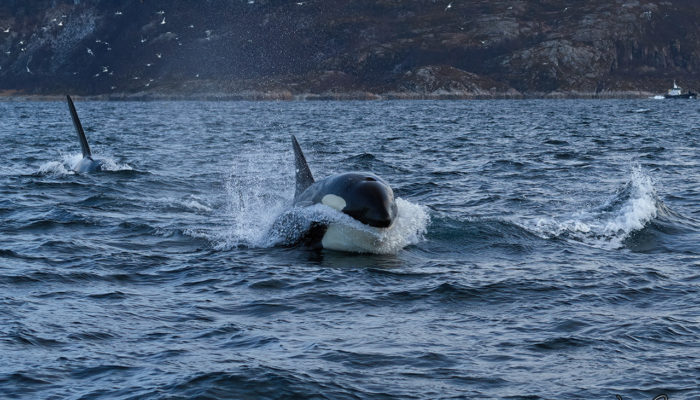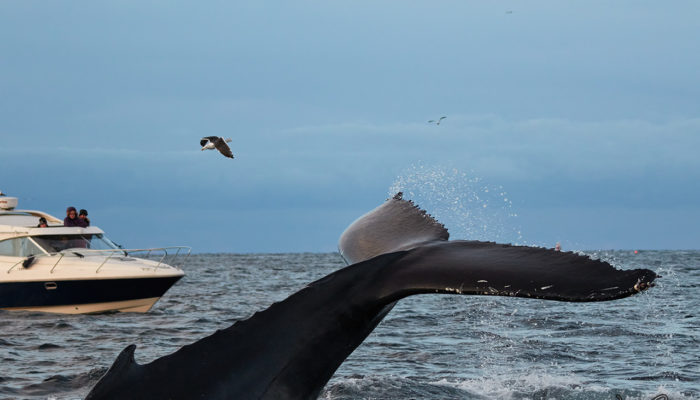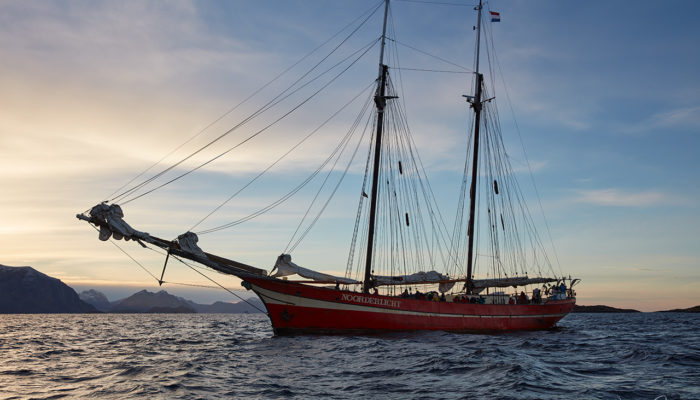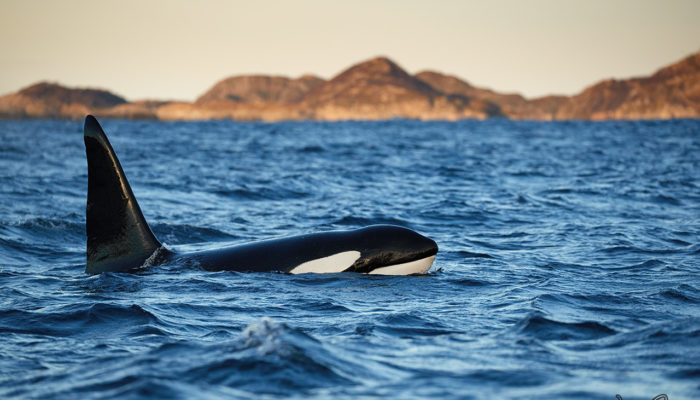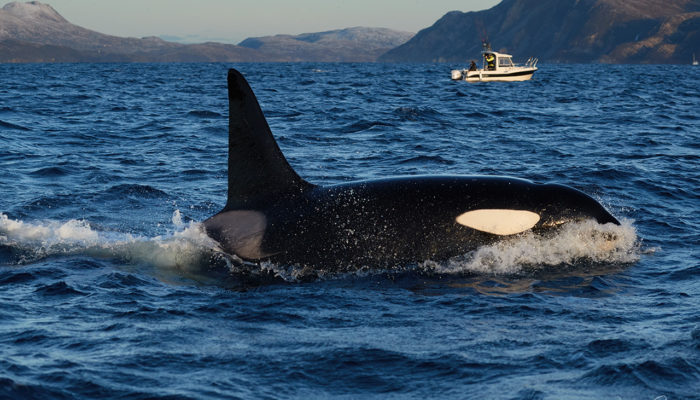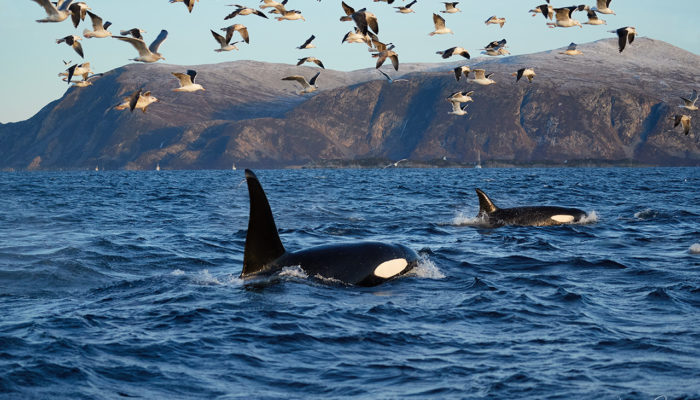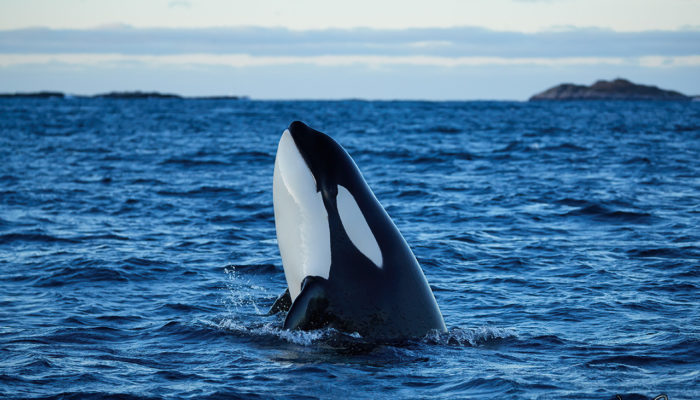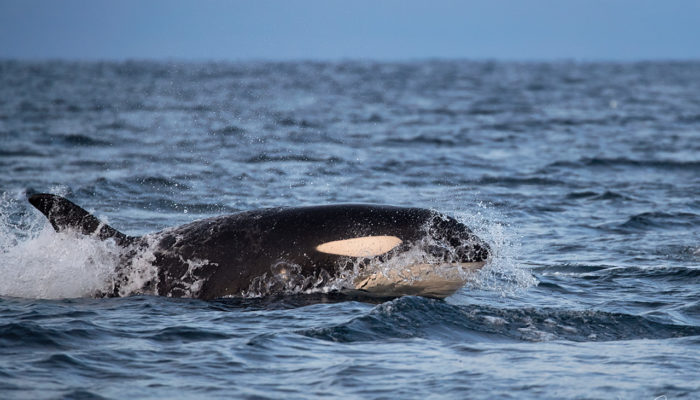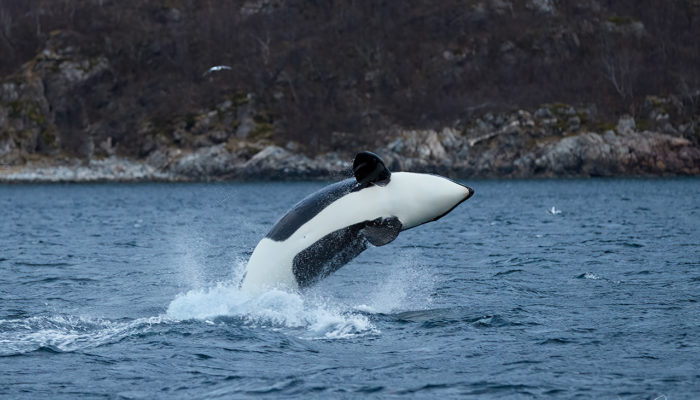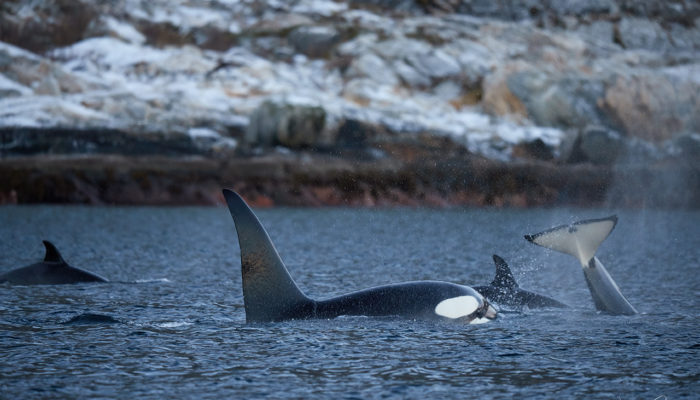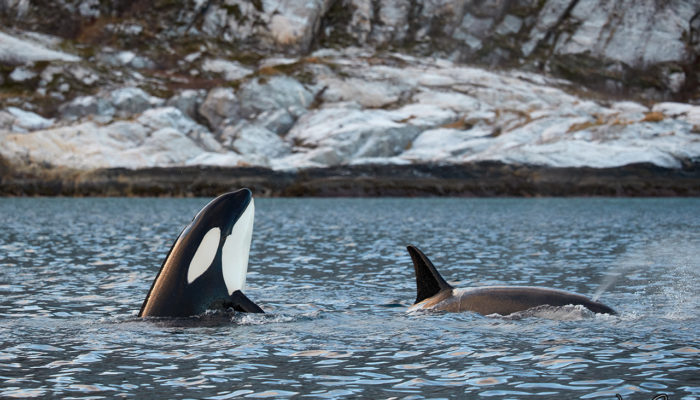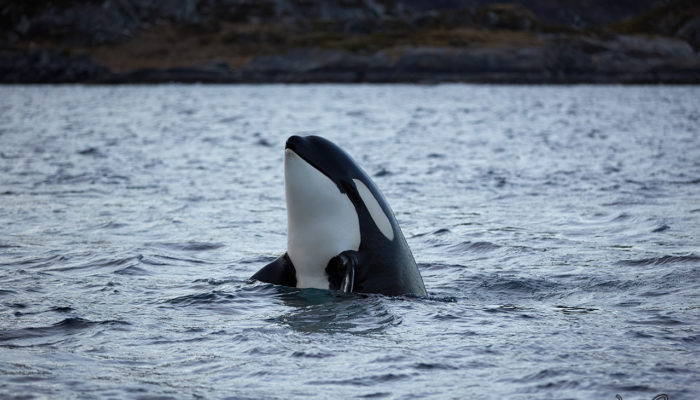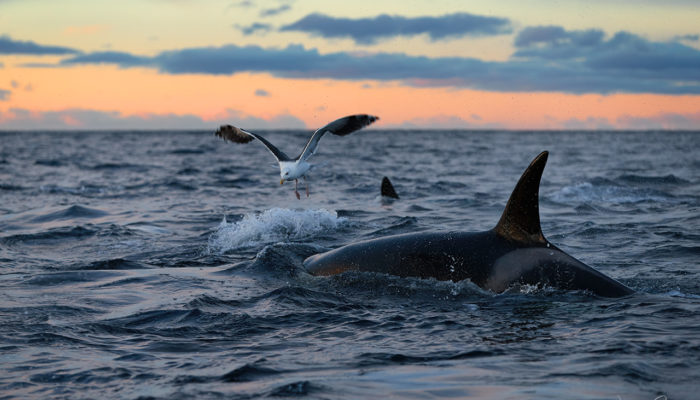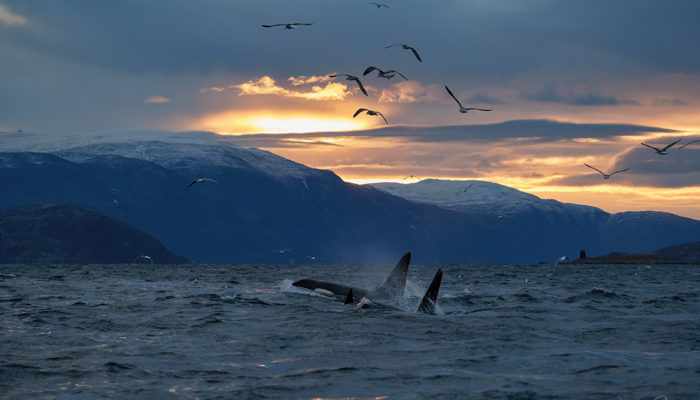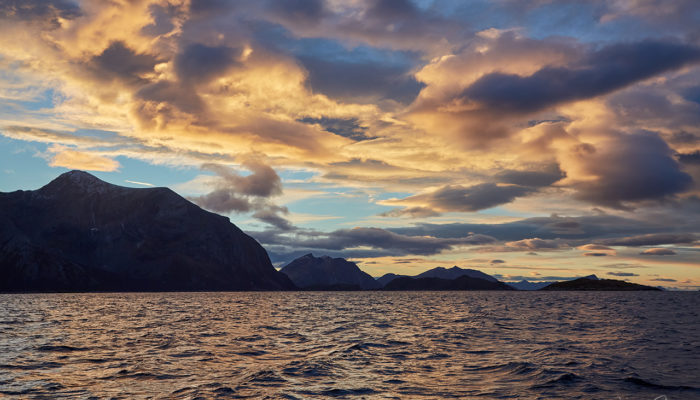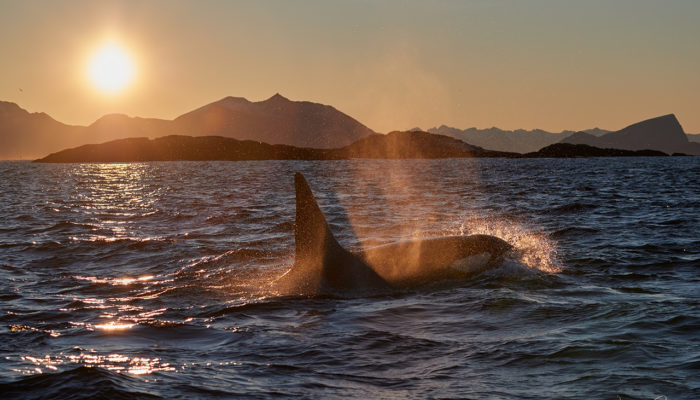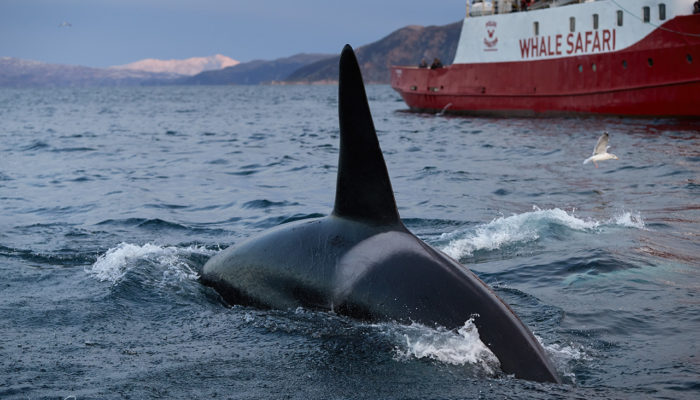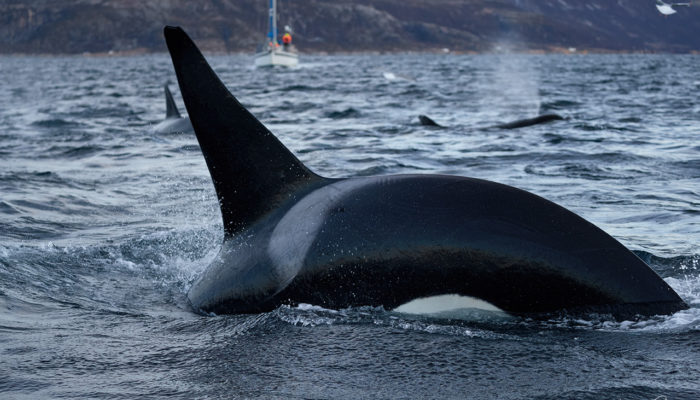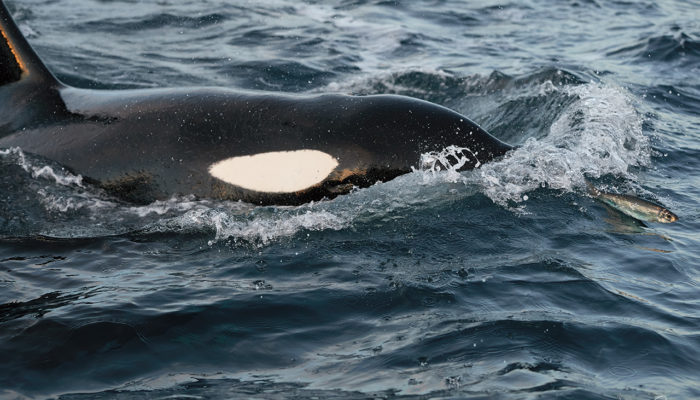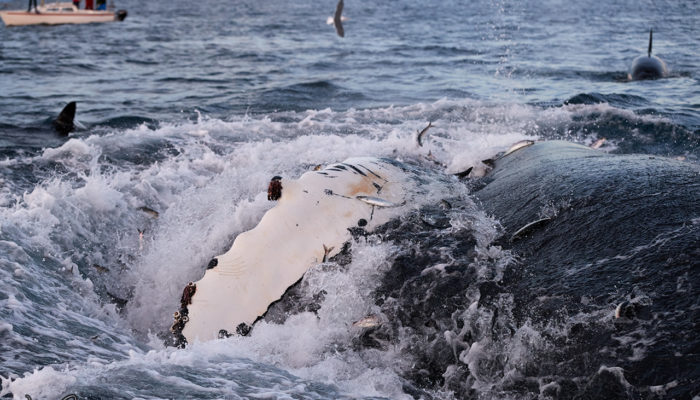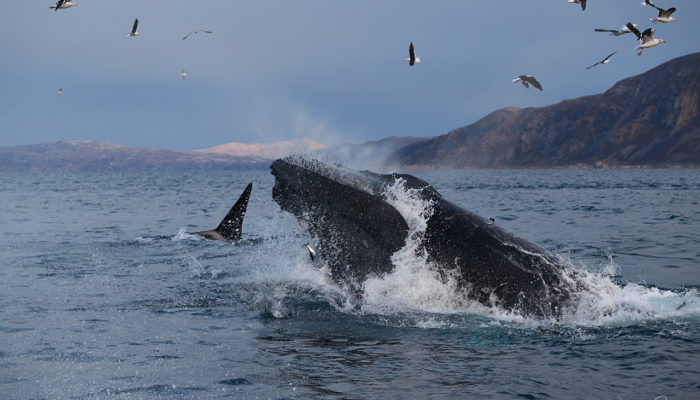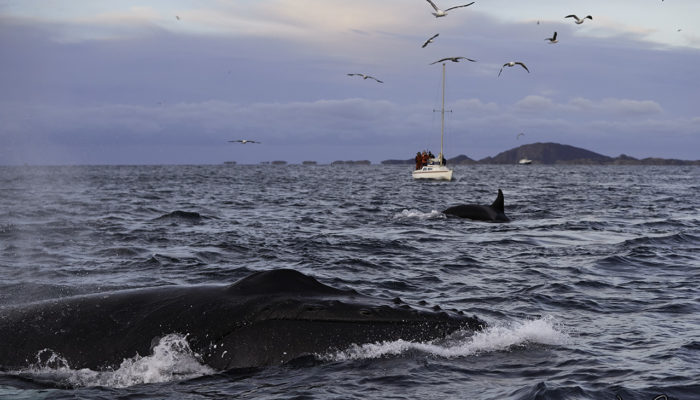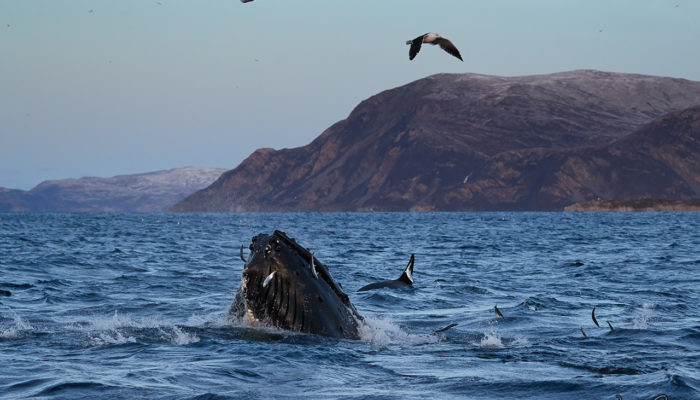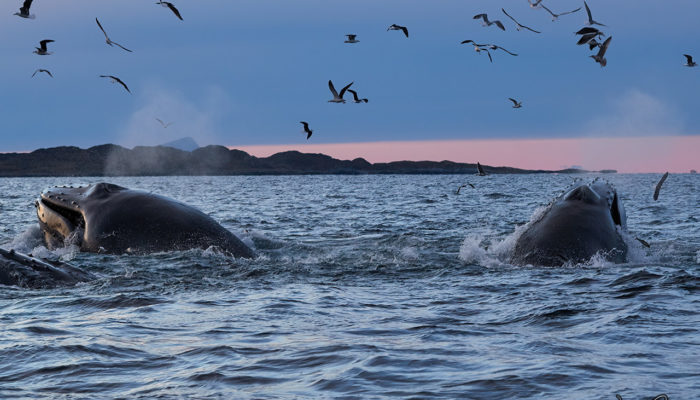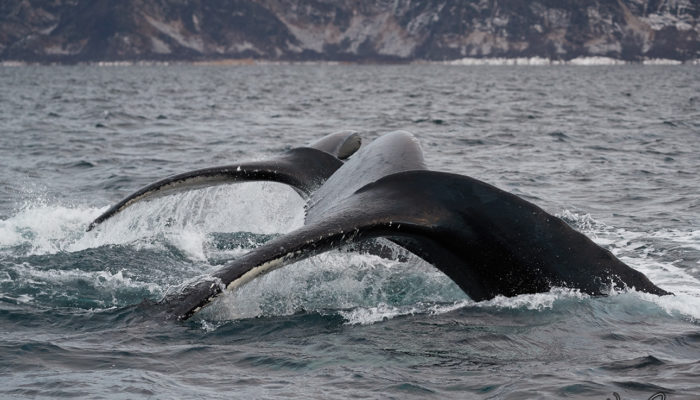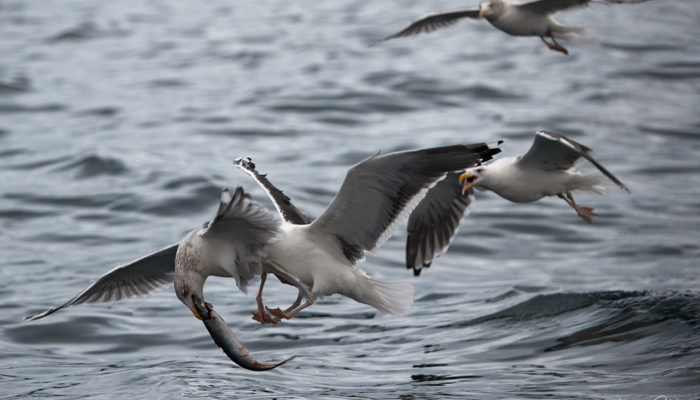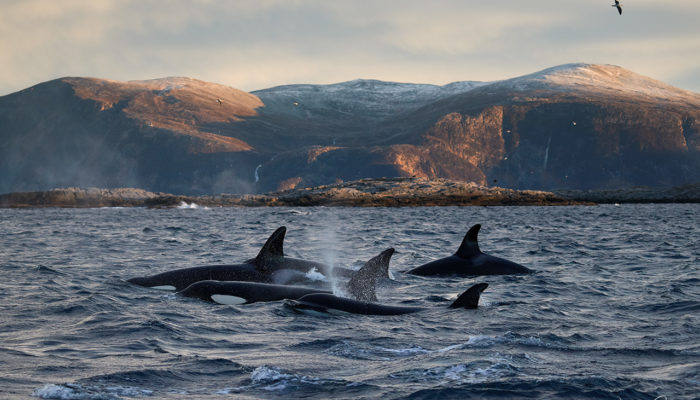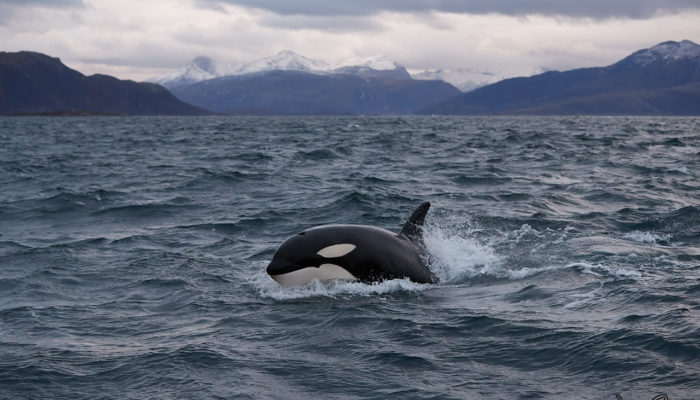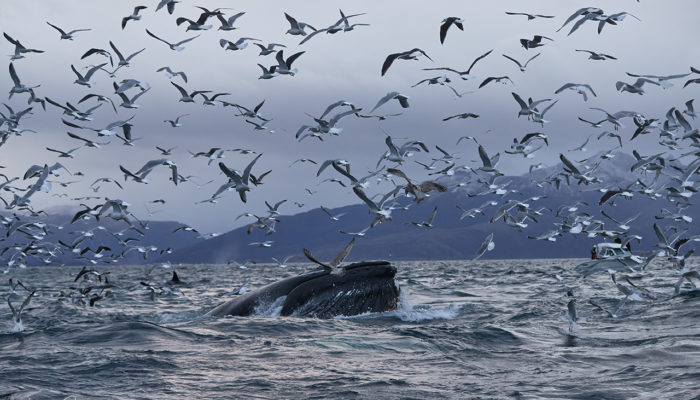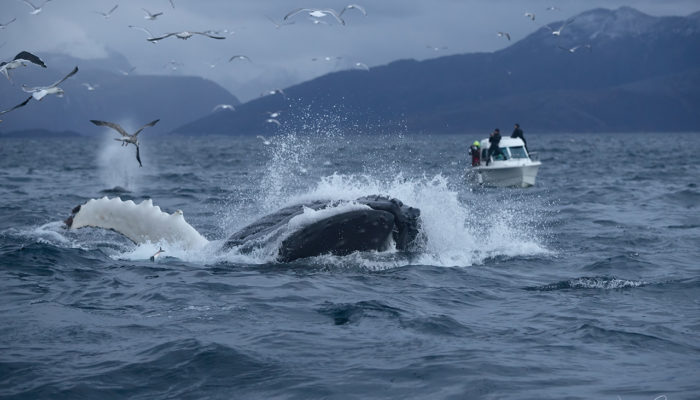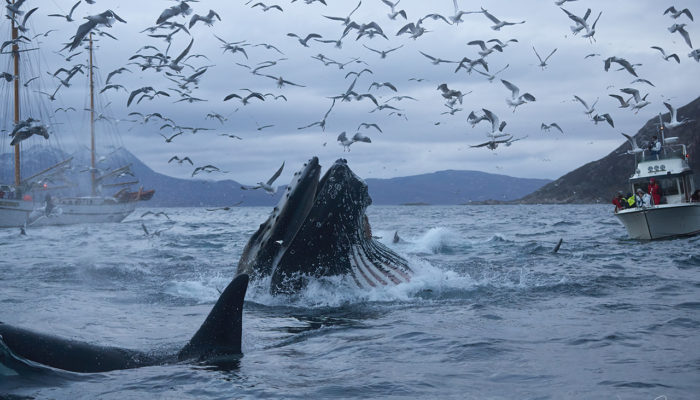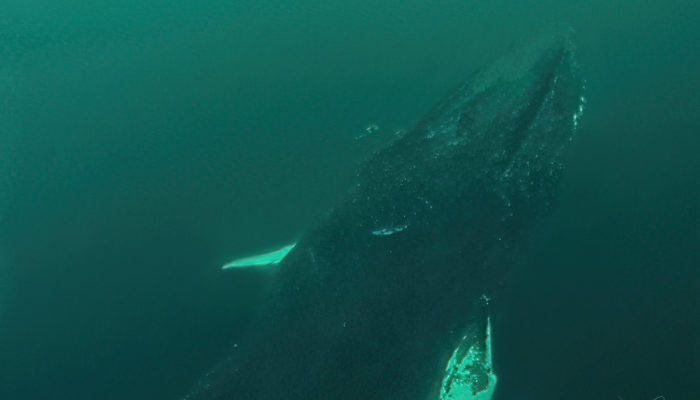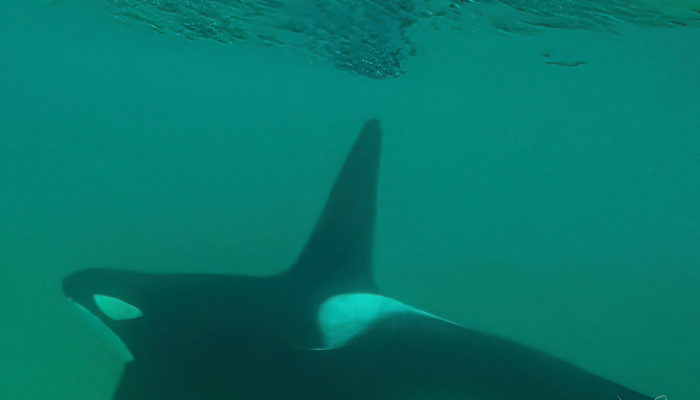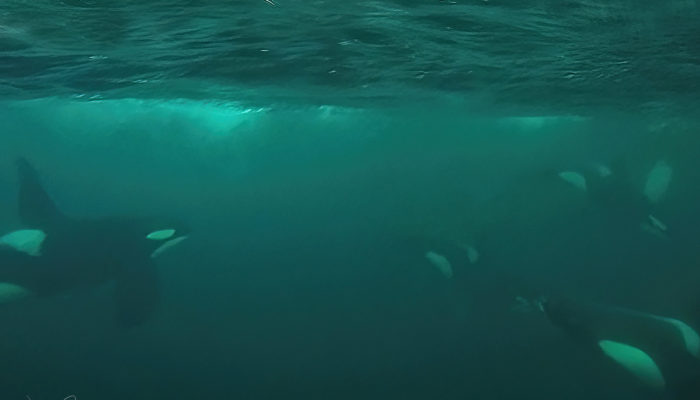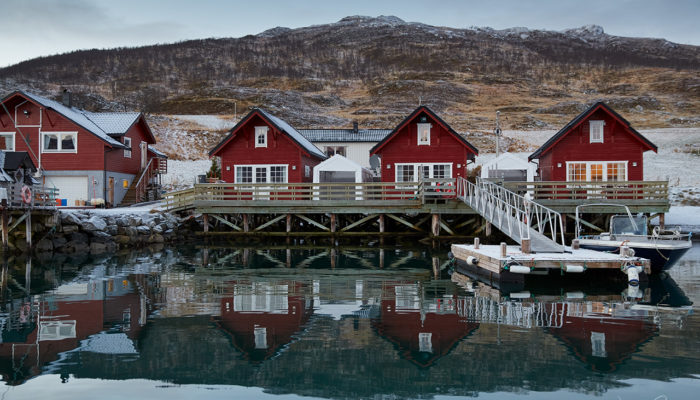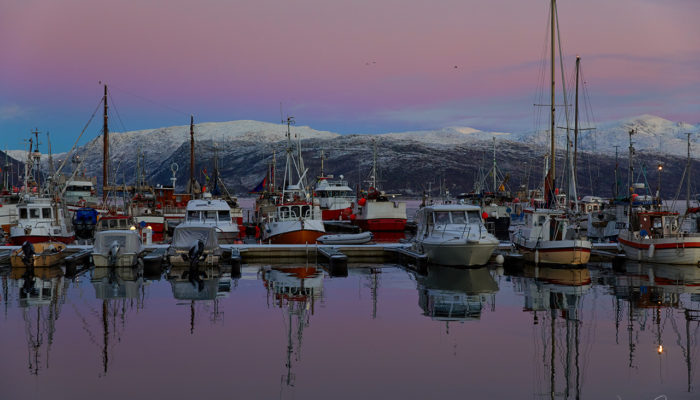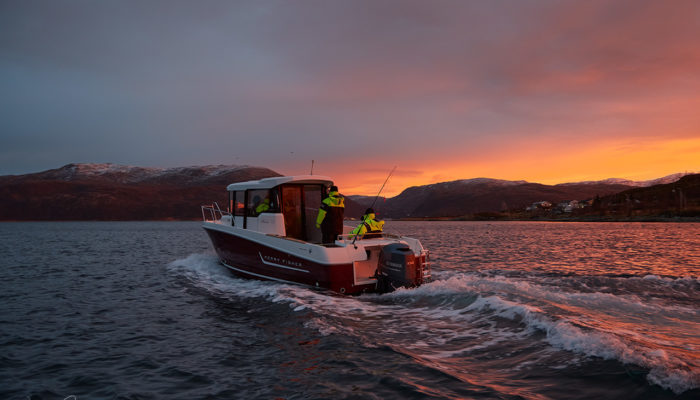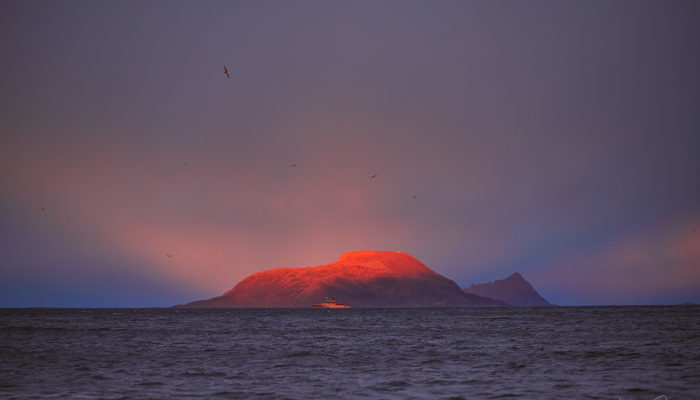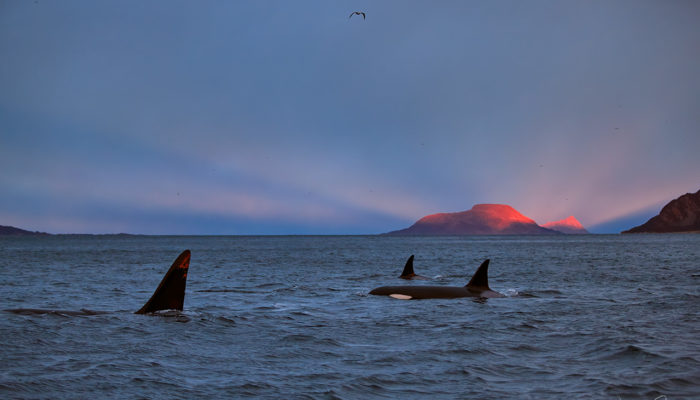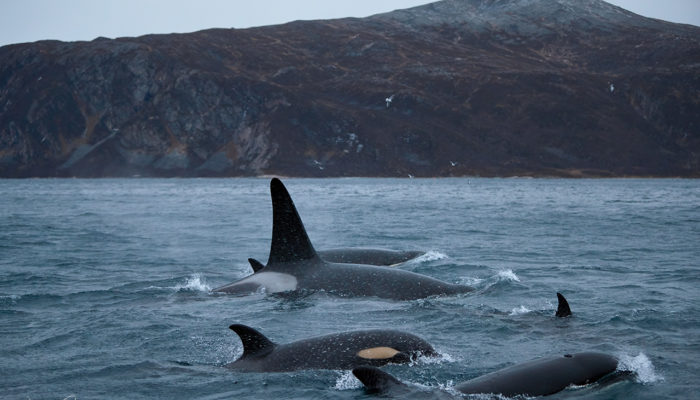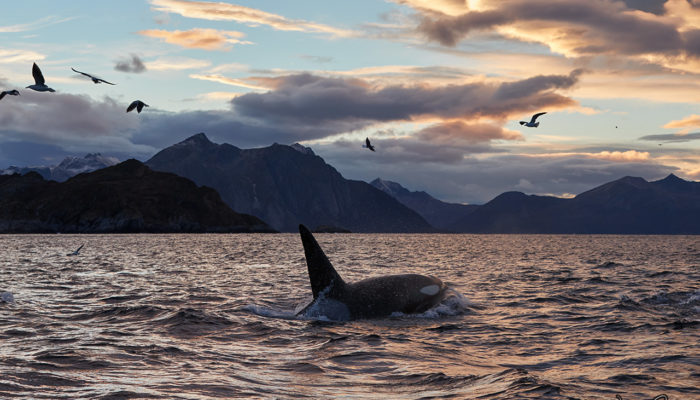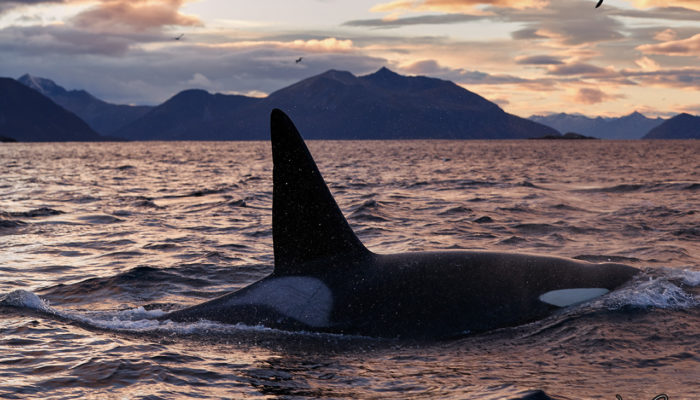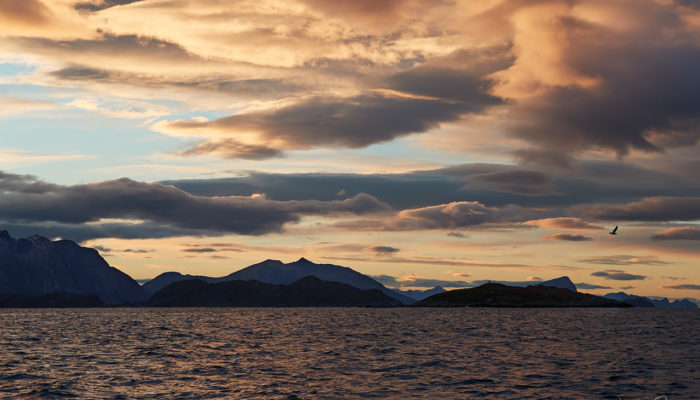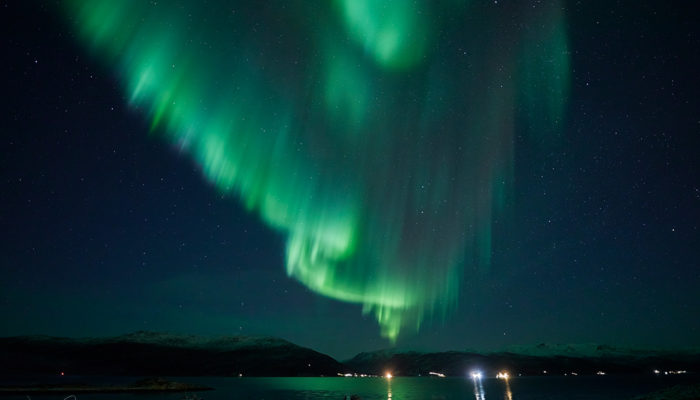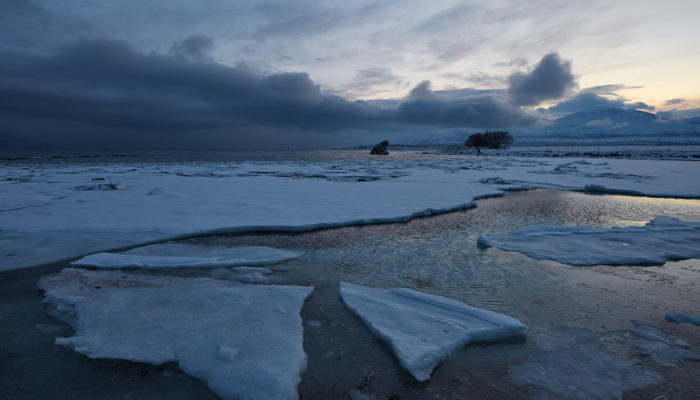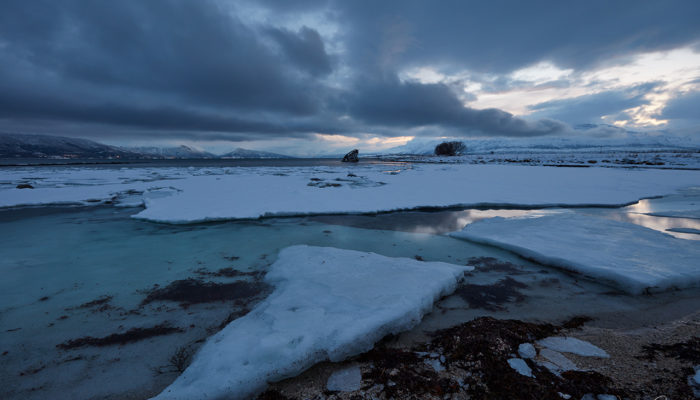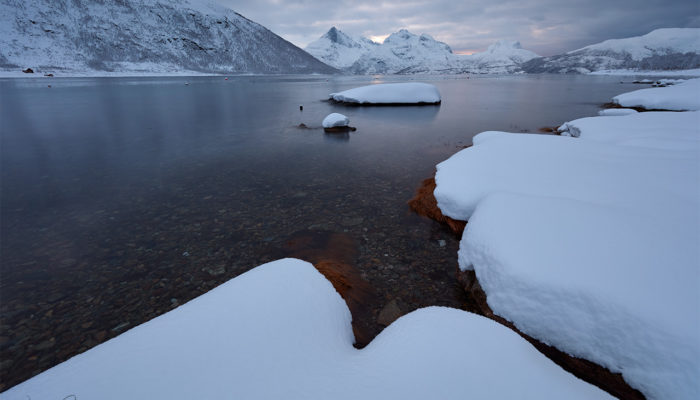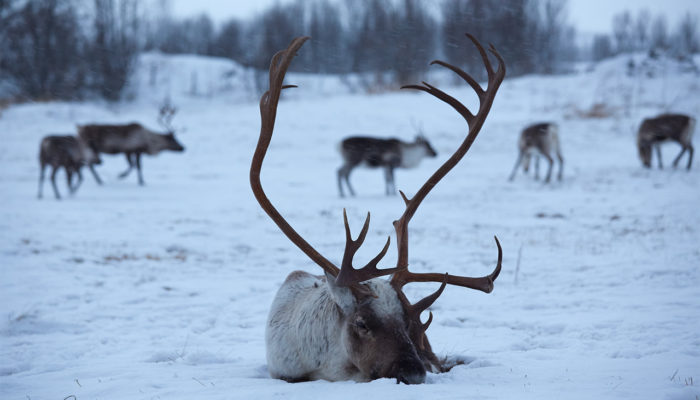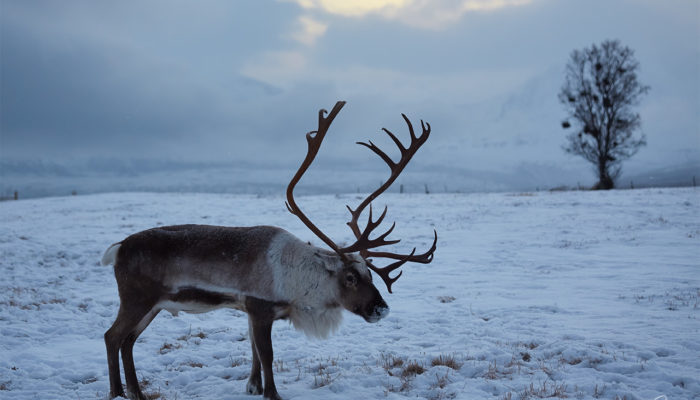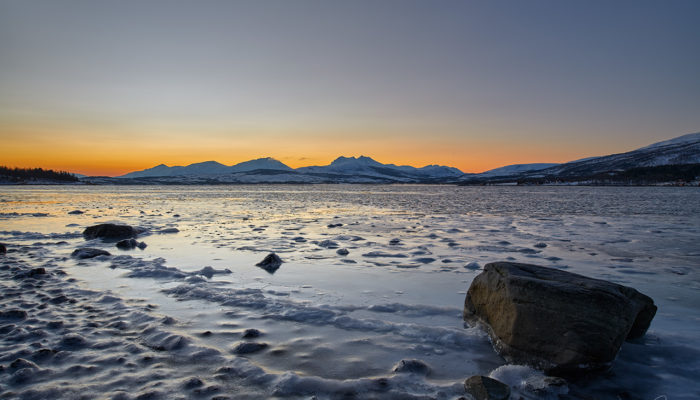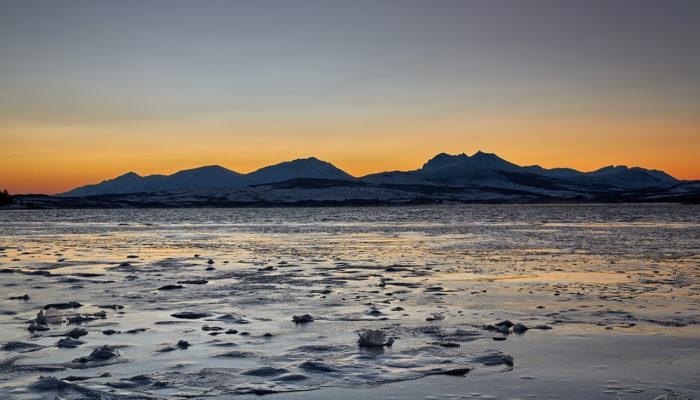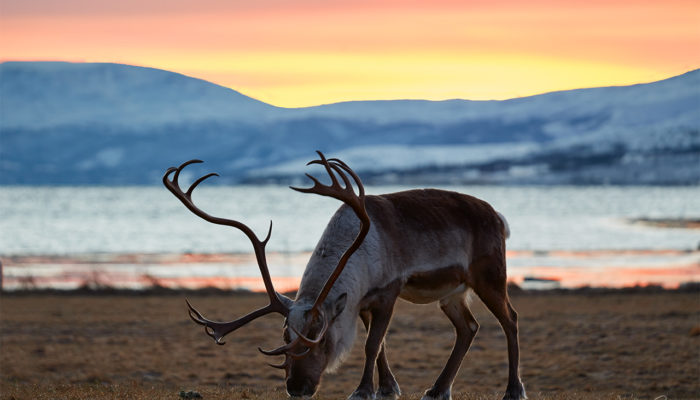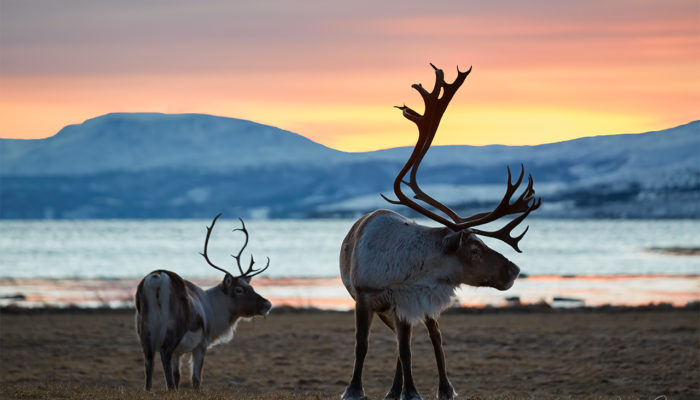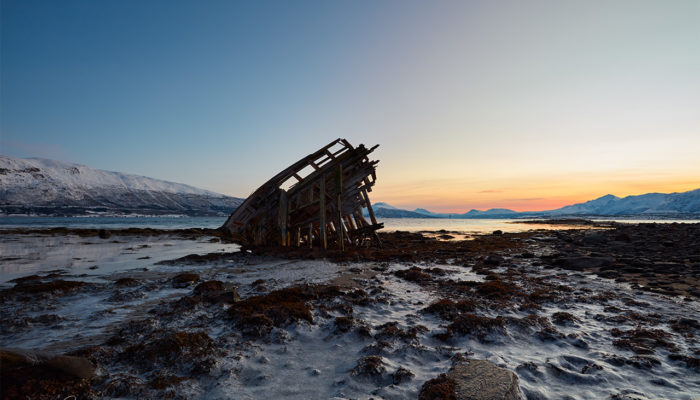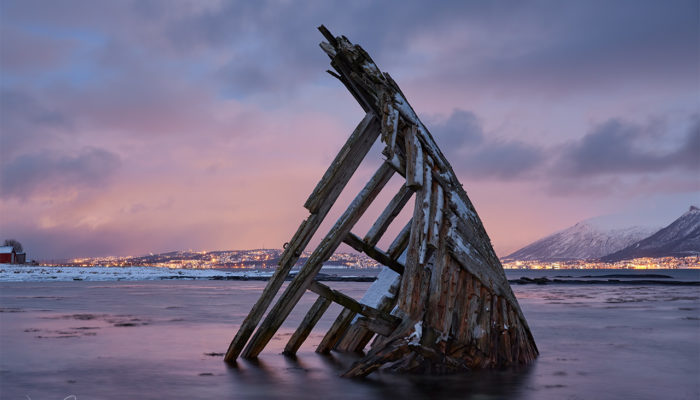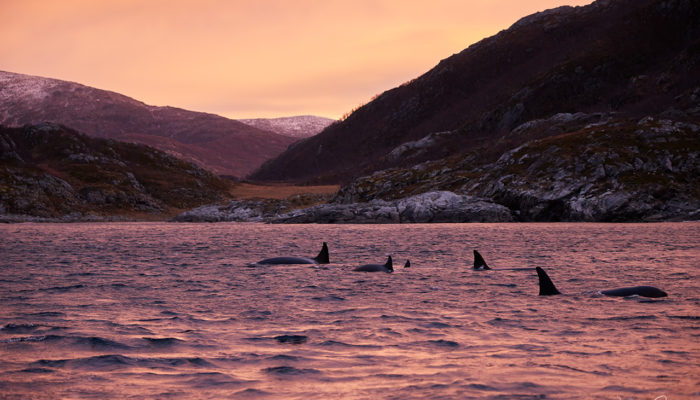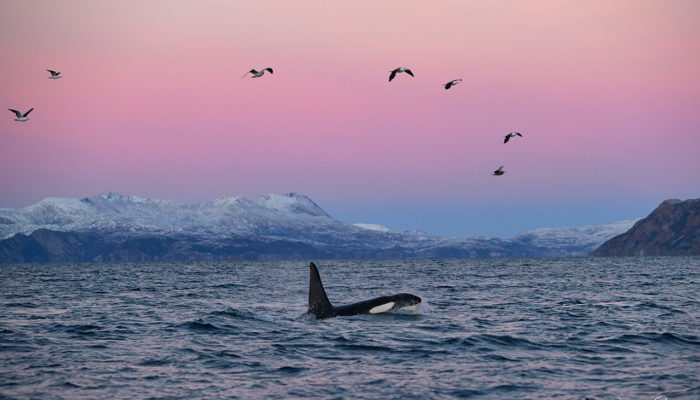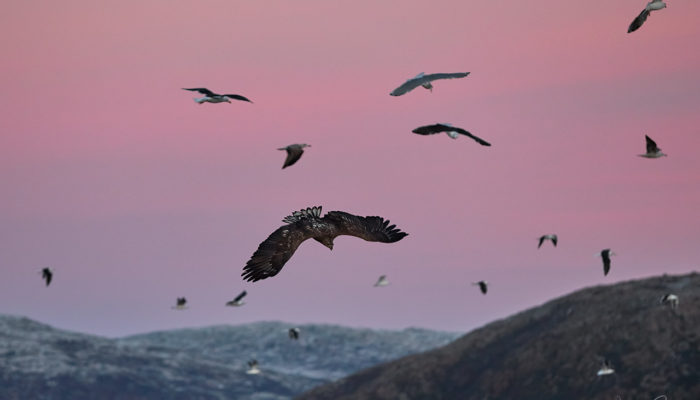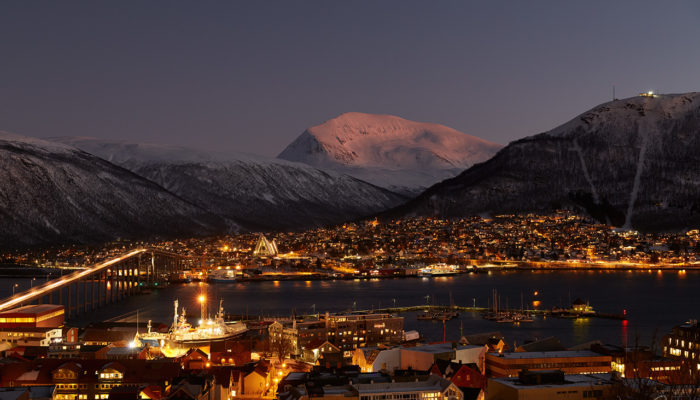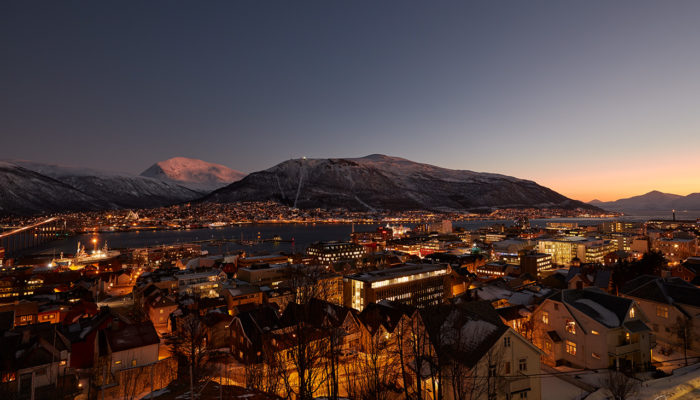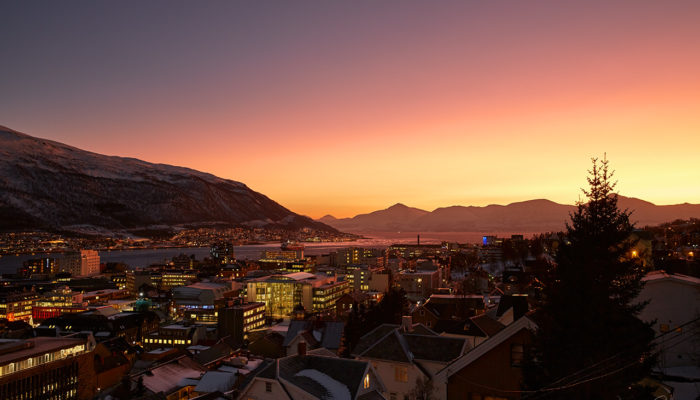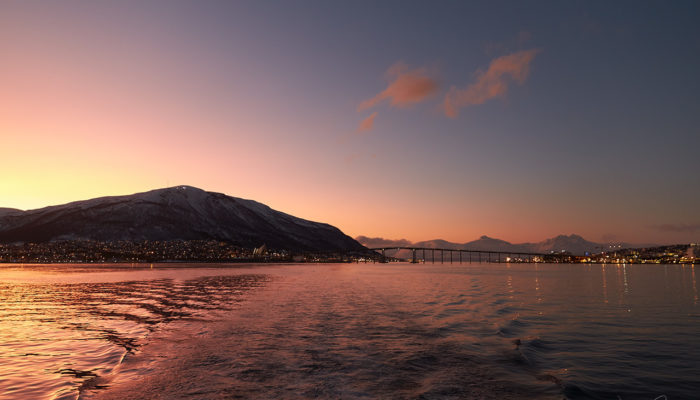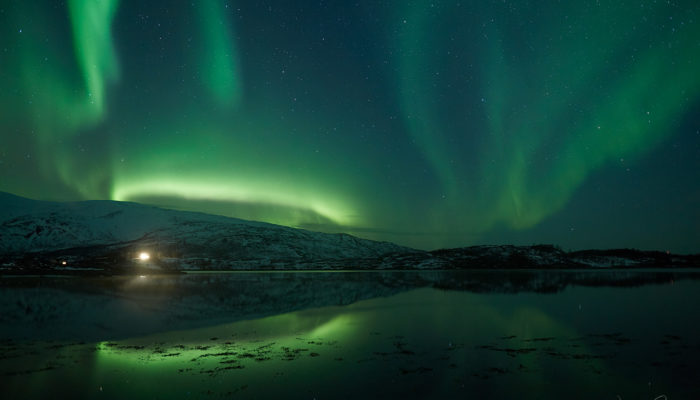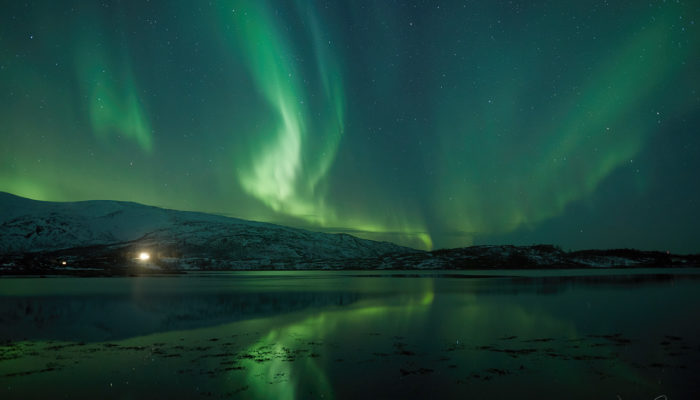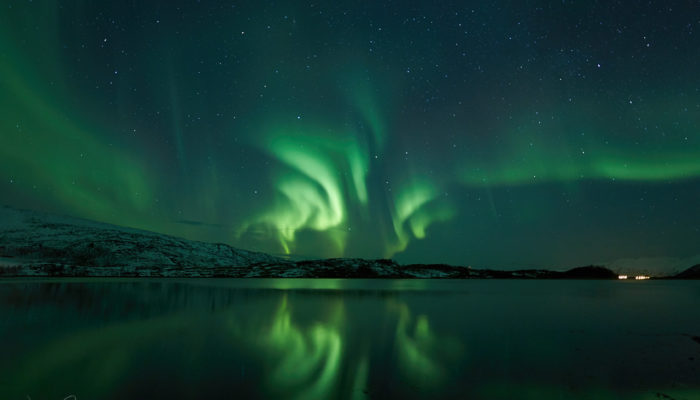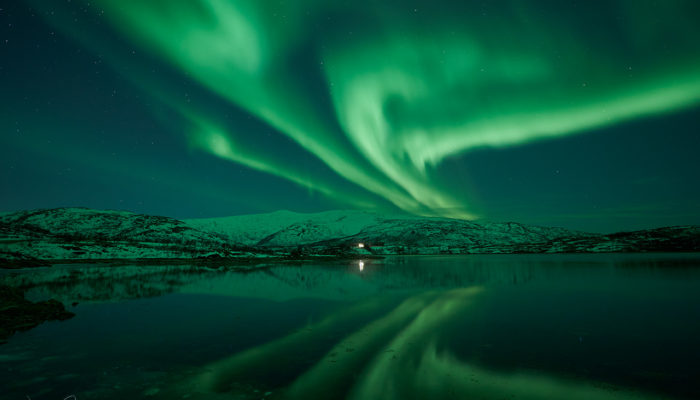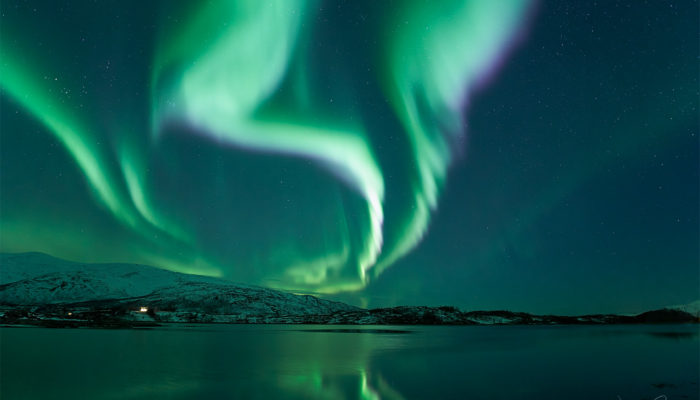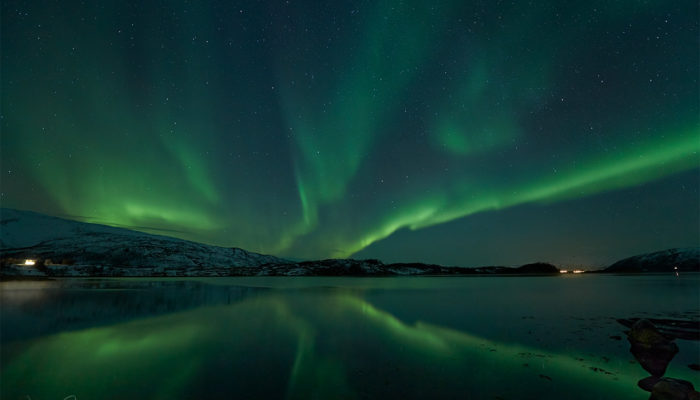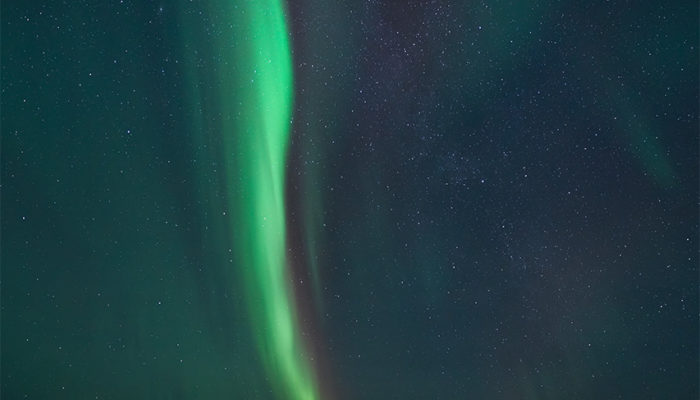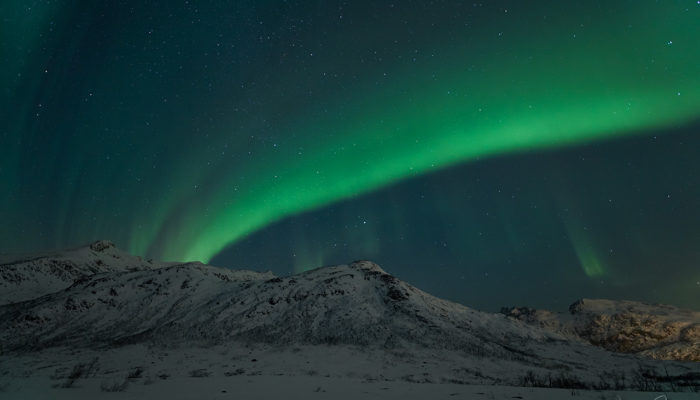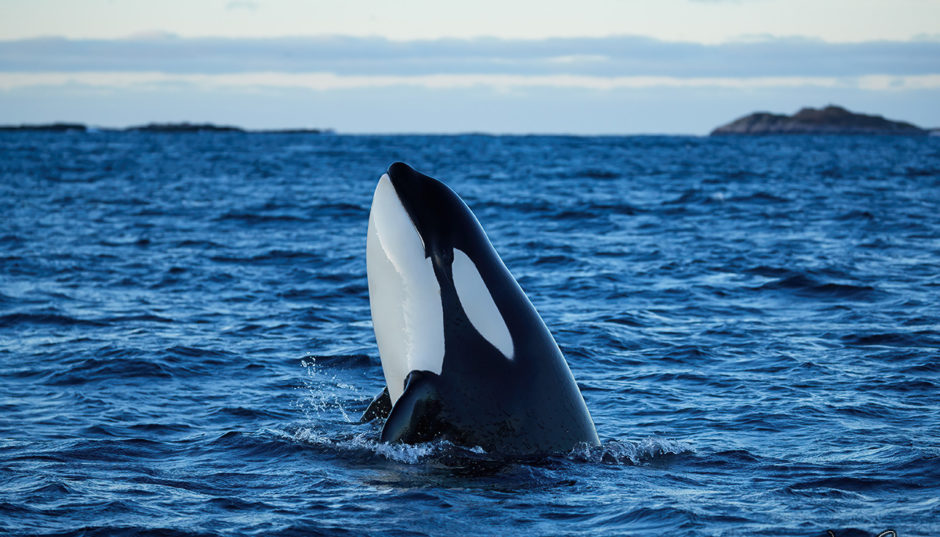
General information:
Every year from the end of October to mid January the probably largest gathering of killer whales (Orcinus orca) in the world takes place in the Tysfjord, Vestfjord and Troms region due to millions of Norwegian Spring-spawning Herring (NSSH,Clupea harengus) overwintering in the fjords of Northern Norway during their northeastward migration from the Norwegian Sea. Many humpback whales (Megaptera novaeangliae) also feed on the herring there which arrive in November and remain in the wintering grounds for about 4-5 months in dense aggregations. Sometimes as many as 50-60 orcas and humpback whales can be observed.This is where the BBC came to capture the life of whales and orcas feeding in the BBC film Blue Planet 2.
Orcas are very social and intelligent marine mammals with the pods led by a female animal and a complex sonar language to communicate. Norwegian orcas have developed a unique and special technique to prey on the abundant spring-spawning herring shoals. This method is called “carousel feeding”: They encircle the herring and force them into a tight bait ball which is a large spherical formation of fish packed closely together. To be able to capture herring, the whales first need to isolate smaller schools from the thick “layer” of wintering herring, though. During daytime herring is present in deep waters (150-300 m). Killer whales can chase schools from this deep layer towards surface but often prefer to search out small patches of herring, which occur in shallow waters in early morning. There they slap the fish with their tail flukes to paralyze or even kill several fish at a time.This gives the orcas enough time to eat the herring one by one. An adult orca eats up to 200 kilos of food per day. Nevertheless, the herring population is not completely depleted because the orcas never eat the whole herring ball.
While orcas mostly are the initiating species of the hunt, humpback whales often join the feast and benefit by feeding on the fish ball afterwards. I often could watch 1-3 humpbacks involved in the mixed feeding aggregation. Though not as frequent as in the waters of Alaska, humpback whales sometimes also practice the so-called bubble-net-feeding by blowing bubbles from their noses to encircle the fish like a net and concentrating their prey into a tight ball. Then, the whale or group of whales swim together from beneath, rise to the surface opening their mouths, and gulp up their prey.
Trip information:
For the first time, I got a glimpse of the spectacular events in January 2016 when I had been on a photo trip in Tromsø for photographing Northern Lights. There I came across the announcements of daily whale watching tours starting from Tromsø harbour and decided to join one of the 3 hours trips. Since my stay in Tromsø was focused on photographing the aurora I was not prepared shooting distant wildlife and only had brought the 70-200mm Zoom as the longest focal length on that trip. Nevertheless, it was impressive just to watch the orcas and humpbacks in the fjord near Tromsø. That’s why I was excited when I got the offer to take part in a special two weeks safari in November 2016 for shooting the orcas and humpback whales in the area. From our base camp in Kvaløyvågen, located on Kvaløya Island off Tromsø (see map below), we started each morning at first dawn on our speed boats in search for the orcas and humpback whales in the fjords.

edited from OpenStreetMap
We could spot and photograph them and their feeding action every day, often close to the boat. Occasionally, there even was a chance to record underwater videos of the orcas by attaching the GoPro to a selfie stick. The quality of the extracted stills was very limited, though, the more as I only had a very short stick to mount the GoPro on. I had not expected this option at all and thus not bought an appropriate longer telescope stick in advance. That said, I had shared my room with a professional underwater photographer who was fully equipped and dived with the orcas and humpbacks. His images were stunning and later honored by the BBC competition.:
Around 350 km north of the arctic circle, there are just 3 to 5 hours of light In late autumn and winter with the sun completely remaining below the horizon during the polar night season from November 27th to January 15th. Close to that period and inbetween, the scenery is bathed in fantastic pinkish or blue light from the low sun or the twilight – weather permitting, of course.I could also photograph beautiful displays of Northern lights over the fjord at Kvaløyvågen.
The gallery only covers a small selection of the numerous shots of the orcas and humpbacks I came home with and also includes some images of the scenery and aurora displays I had captured on the trip in January 2016 before.
Photography:
For photographing the orcas and humpbacks, I mostly used my 100-400mm/f4-5.6 L IS II USM zoom mounted on the Canon EOS 1-DXII camera and the 70-200mm/f 2.8mm L II USM on the Canon 5D Mark IV body for closer action. I had also brought the 200-400mm L USM/f4 +1,4Ext zoom which turned out to be too heavy and inflexible on the speed boat most of the time, though. To protect the equipment from spray was difficult but mandatory, too. The landscape was photographed with the 28-70mm/f 2.8 L USM zoom mounted on the Canon EOS 5D Mark IV or EOS 5DsR while I had used the Nikon 14-24mm/2.8 ED lens with Novoflex adapter on the Canon EOS- 1DxII for capturing the Northern lights.
Final thoughts:
This trip truly was an amazing und unforgettable experience with the landscape and light offering an additional bonus. The center of orca activity varies depending on the herring migration. In the past, the Vesterålen island of Andøya north of the Lofoten was a good place to see the orcas. The same has been true for the area around Tromsø when I was there and in the years before. Recently, however, the herring seem to move further north each year, probably also because of the food migration. That is regarded as a sign of warming of the waters around Norway. The whales follow the move of the herring, of course, and in recent years have been observed further north in area around Skjervøy. So I remains to be seen if Tromsø still will be a good base in the future.
I hope that I can return for a second trip sometime in the future. Judging by the images I’ve seen, diving or at least snorkeling with the orcas undoubtedly would be an added highlight but would require the suitable equipment and preparation, of course.

